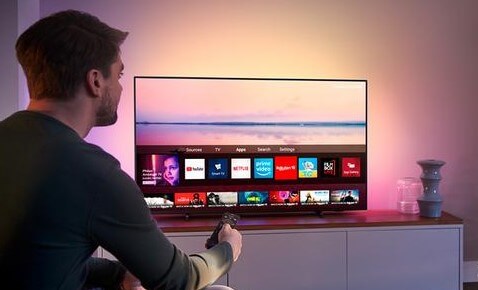In an era where technology is seamlessly integrated into every facet of our lives, the desire to extend our entertainment experience outdoors has led to the exploration of waterproofing solutions for TVs. Imagine watching your favorite shows, movies, or sports events under the open sky, without the worry of rain ruining your setup. In this guide, we delve into the intricacies of waterproofing a TV, from the basics to the considerations that demand attention. Whether you’re an avid DIY enthusiast or someone looking for professional insights, this article has you covered.
Understanding the Need for Waterproofing:
Water and electronics are a perilous combination, with potentially disastrous consequences. Traditional indoor TVs are not designed to withstand the challenges posed by outdoor environments, including rain, humidity, and temperature fluctuations. The need for waterproofing arises from the desire to transform outdoor spaces into entertainment hubs without compromising on the performance and longevity of our beloved TVs.
The Waterproofing Approach: DIY vs. Professional:
When it comes to waterproofing a TV, two primary routes emerge: the do-it-yourself (DIY) approach and seeking professional help. While DIY enthusiasts may be tempted to explore creative solutions, it’s important to acknowledge the risks involved. A small oversight in the waterproofing process can lead to irreversible damage. Alternatively, seeking the expertise of professionals who specialize in waterproofing electronics ensures a reliable and safe outcome.
Key Steps to Effective TV Waterproofing:
- Choose the Right TV: Start with a TV that is designed for outdoor or wet environments. These TVs are specifically manufactured to withstand exposure to moisture and humidity. They often come with higher IP (Ingress Protection) ratings, which indicate the level of protection against dust and water. Look for a TV with a high IP rating suitable for your intended use.
- Enclosure Selection: A waterproof enclosure is essential to protect the TV from water, humidity, and other outdoor elements. There are specialized TV enclosures available that are designed to maintain visibility and functionality while keeping the TV safe. Make sure the enclosure is properly sealed and provides a clear view of the screen without distortion.
- Sealing Cable Openings: Any openings or ports in the enclosure where cables enter should be properly sealed to prevent water ingress. Use waterproof grommets or cable glands to seal these openings tightly.
- Ventilation and Cooling: Even in a waterproof enclosure, heat can build up and impact the TV’s performance. Ensure that the enclosure has proper ventilation and, if required, incorporate a cooling system to maintain a suitable temperature range for the TV’s components.
- Waterproof Mounting: Choose a secure and waterproof mounting system that’s appropriate for the TV’s size and the installation environment. The mounting should provide stability while protecting the TV from any potential water seepage.
- Electrical Safety: Ensure that all electrical connections, including power and signal cables, are properly sealed and insulated to prevent electrical hazards. Waterproof connectors and junction boxes should be used wherever needed.
- Testing and Quality Assurance: Before finalizing the installation, thoroughly test the TV in its waterproof enclosure to ensure that it functions as expected. Check for any leaks, distortions in the screen visibility, or performance issues. It’s best to perform these tests before permanent installation.
- Professional Assistance: While DIY approaches might be suitable for some tasks, waterproofing sensitive electronics like a TV is best handled by professionals with experience in this field. Consult with experts who specialize in outdoor electronics installations to ensure safety and reliability.
Remember, proper waterproofing involves more than just sealing the TV from moisture. It also includes factors like temperature control, visibility, and ventilation. Investing in a high-quality, purpose-built outdoor TV and enclosure, along with professional installation if needed, will provide the best results in terms of both performance and safety.
Concluding Thoughts:
Waterproofing a TV is a captivating endeavor that promises to elevate your outdoor entertainment experiences. As the demand for outdoor entertainment solutions continues to grow, so does the need for reliable and efficient waterproofing techniques. Whether you’re inclined towards DIY experimentation or prefer to rely on seasoned professionals, the key takeaway is to prioritize the safety and longevity of your TV while embracing the joys of al fresco entertainment. By mastering the art of TV waterproofing, you’re not just protecting a piece of technology; you’re unlocking a world of entertainment possibilities under the open sky










































